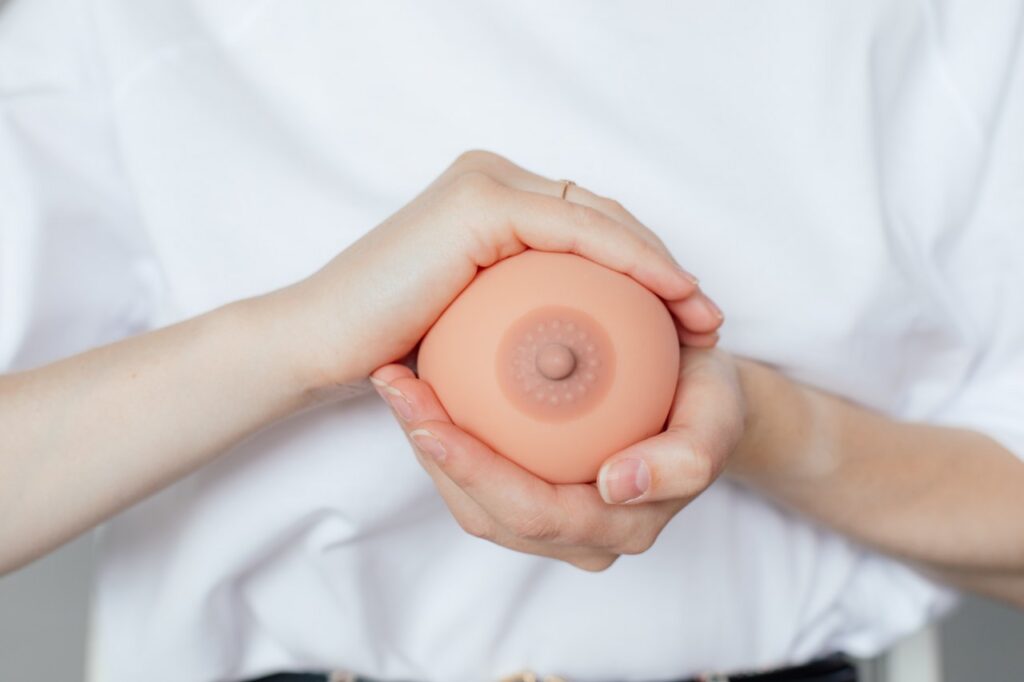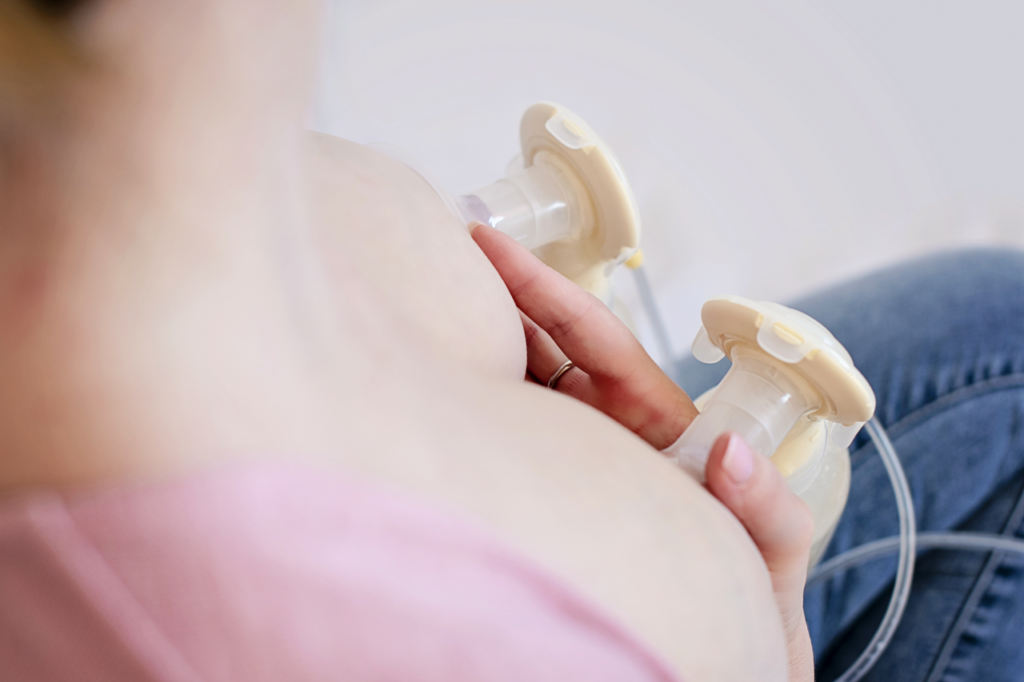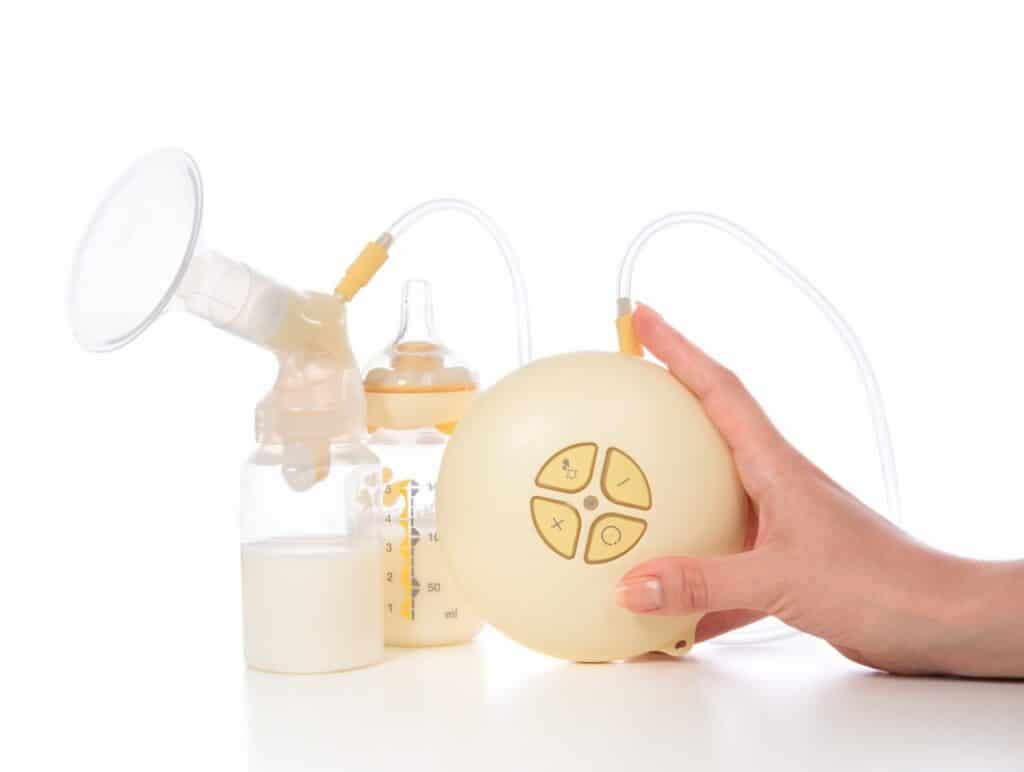The Ins & Outs of Pumping Milk
How, When, Where & with What
There are many different ways to get milk out of your breast; a baby, hand expression, a simple hand pump, silicone pumps, single electric pump, double electric pump, hands-free pumps and hospital grade pumps.
Your needs will determine your pumping equipment & frequency. A parent who spends a few hours away from their baby periodically vs. a parent that is separated for a full work day will have different pumping styles & schedules.
Let’s dissect the different ways to get milk out.
Hand Expression
Hand expression just means using your own hands to massage the milk down and out. It is an awesome skill to have, especially in the 1st few days after birth when you might experience engorgement. It is also useful to know how to effectively get your milk out if you don’t have a baby or pump handy. (pun intended)
Many birth providers recommend harvesting colostrum daily from 37 weeks on and collecting the drops if there are any. Volumes vary – they range from not seeing milk, maybe just a glisten on your nipple, a few drops or more than a few drops. Colostrum is thick and there is only a small amount so it doesn’t just flow.
This is not an indicator of future milk production at all. This is really good practice and it’s not about the collection, it’s about connecting with your body in a new way.
Hand expression can be used alone or in conjunction with a pump to possibly yield more milk so practice, practice, practice.


Hospital Pumping
Hospital grade pumps are super effective, double electric pumps that are available in hospital if your lactation consultant recommends one. Pumping within the 1st few hours or days after birth can be utilized if your baby is separated from you, is struggling to feed or you are exclusively pumping your milk.

Occasional Pumping
If you want to offer your baby a bottle periodically, then a hand pump could be all you need. They are compact, only use your hand power, pump one side at a time and are usually sufficient to pump enough milk for infrequent bottles. Oftentimes, you can pump directly into the bottle you will feed from, remove the flange, pop the feeding nipple on and it’s ready to go.
It isn’t a bad idea to have a few of these portable, power-free, inexpensive pumps stashed in places like your work desk or car, just in case you need to pump without power.
Sidenote: If you have sensitive wrists, this might not be the best choice for you.
Daily Pumping
If you are pumping daily to replace a feed, do yourself a favor and use an electric pump; a single or double pump could both be useful, but the double pump, expresses both breasts at the same time which is a true time saver.
You can also pump simultaneously as your baby feeds to streamline the process. Practice feeding & pumping separately first before you attempt to double up.


Separation Pumping
If you will be separated from your baby for hours daily, a good quality, double electric pump & frequent pumping schedule will maintain milk supply and ensure your little one is still fed.
Navigating working and pumping needs a supportive environment and cooperation from co-workers. Most work settings legally must provide time, privacy & power to pump. Planning & prepping before you actually get back to work is optimal. Work, Pump, Repeat by Jessica Shortall is an invaluable resource for working-pumping parents.
Pumping 101
Getting Started, Frequency, Milk Stash, Hand Expression
Playlist
Introducing Bottles
Introducing a bottle to your baby is ideal between 4-6 weeks, after at least 2 weeks of good breastfeeding or when you feel like it’s the right time for your family.
Paced bottle feeding is a method that honors your baby’s rhythms and gives them a little more control over the feed which is why it also called baby-led bottle feeding. (check out the videos below)
During the introductory time, make sure baby is already well fed, you are calm and it is a low stress environment to make it a more pleasurable learning experience.
Some babies take it right away and others need a bit more coaxing. It is a new skill for them to learn.






















